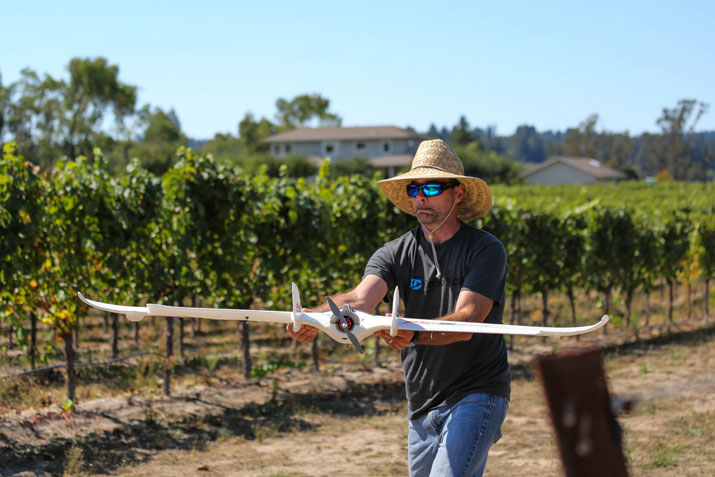The 21st century technological revolution has been a profound era of human development. The wide range of high-tech products have come with countless implications for both the good and bad. Drones have become a popular technology with multiple applications. How they are used and by who is a distinction that should be made.
Drones are well on the way to change agriculture forever, much like farm mechanization. Food producers are now using drones to inspect their crops for disease and contaminants. The new technology, a quadcopter X8M drone, sells for around $5500 and allows farmers to more efficiently ensure quality output. With the new productivity gains, farmers will be able to focus more on quality control at a lower cost. Thus, more resources will be available to improve the long term outlook of our food production.
In spite of threats from FAA regulators, agricultural firms are refusing to ground their drones. Why? Because of the benefits to their productivity, consumers, and bottom line.
Agriculture is one of many applications that will benefit from the low-cost, high value drones. In fact, we may be experiencing that in the not-so-distant future when we shop online.
Amazon has been exploring a 30-minute delivery service made possible with drone technology. Thanks to bureaucrats at the FAA, however, the new program has been put on hold. Despite a lengthy petition, Amazon has not yet been approved to conduct experimental tests for their service. Typical bureaucratic meddling has slowed technological development and the FAA regulations are years overdue.
Customers, of course, benefit from 30-minute Amazon shipments. They already love free 2-day shipping, but capitalism never ceases to improve customer experience. According to the Amazon petition, their drones would carry shipments up to five pounds, which is 86% of their product line. Prime members will rejoice knowing that a must-have product is one click and 30 minutes away.
Henry Hazlitt tells us that economic analysis must always consider primary and secondary effects. To that end, environmental benefits are certainly worth mentioning. Amazon’s drones run on batteries, unlike the gas guzzling trucks and planes currently in use. Thus, fuel consumption and shipping costs would dramatically reduce as traditional means loose demand to more efficient drones. One can only speculate the extraordinary benefits if this technology were made available to the entire market.
Amazon isn’t the only firm trying to benefit from drones, but they are one of the largest. Lakemaid Beer, a self-proclaimed “fisherman’s lager”, made the decision to better serve its thousands of customers on the icy lakes of Minnesota. Ice fishermen unsurprisingly enjoy a few cold brews while out on the frozen lake, but it’s cumbersome to make the long trek back to the store. Lakemaid Beer started delivering 12-packs to thirsty fishermen via drone plane. Of course, the FAA would have none of the beneficial service and immediately shut down the operation.
These are just a few of the ways drones can benefit the economy and consumers. Drones could also be used to 3D map topography, observe and protect wildlife, hunt hurricanes, and conduct search and rescue missions. As drones become more commercially available, we still start to see how capitalists use drones as opposed to government.
When the government gets their hands on a new technology, you can bet one thing: it will be used with malicious intent. The United States plans to increase their drone inventory by 35% over the next decade, which will cost taxpayers $40 billion. However, these drones deliver more than packages and beer. Over five years, drones were responsible for the deaths of 2,500 people with as many as 1,000 being civilians. Botched drone strikes include a Yemeni wedding convoy that killed 12 people and another that killed a 16-year-old American boy.
Furthermore, scathing reports from the UN condemn the use of drone strikes and claim that they create more regional instability and animosity against the U.S. According to the ACLU, drones are being expanded domestically for law enforcement surveillance operations. What could possibly go wrong?
While “evil capitalists” use drones to benefit consumer’s value, government predictably uses them to invade civil liberties and outright murder people. It’s a telling difference on the motives and methods of private enterprise versus government. Those who seek to rely on government for “reforms” should look at how the drone program has been reformed, or lack thereof.
Government incompetence is no doubt a chronic problem. When their incompetence involves armed drones, innocent people die. Free markets, however, seek to use new technology for profit, which can only be accomplished through mutually beneficial exchanges.




